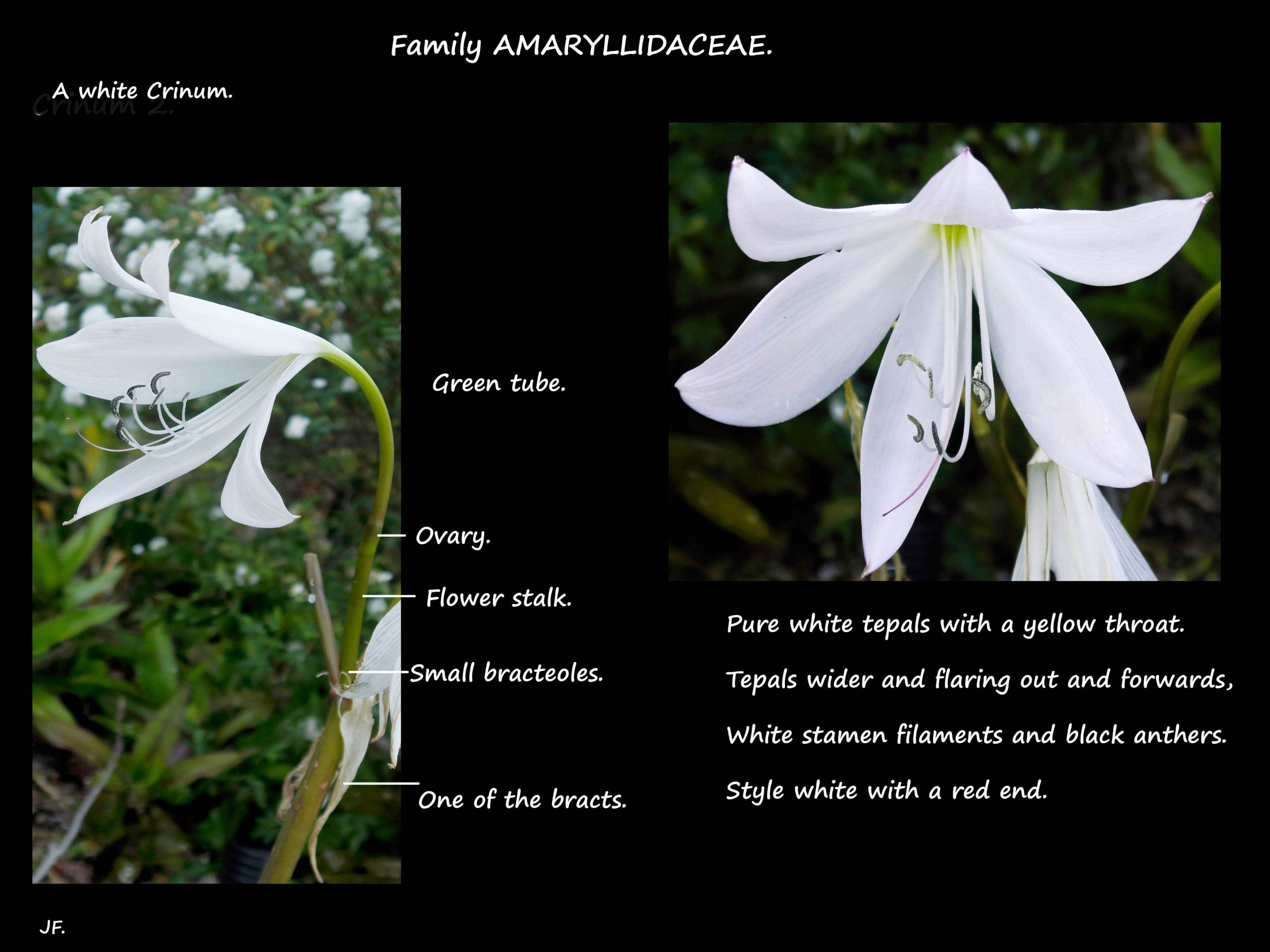Crinum.
Family Amaryllidaceae > Subfamily Amaryllidoideae > Subtribe Crininae.
There are 60 to 105 species found mainly in Africa.
Australia has 4 to 8 genera with some species naturalised.
Flora of South East Queensland, by Stanley and Ross, lists 3 species here – C. angustifolium,
C. flaccidum and C. pedunculatum.
Large, evergreen or deciduous, herbaceous perennial plants.
They have large bulbs from which the leaves arise.
Sometimes the bases of the old leaves from a short above ground pseudostem.
The few to 20 or so long, strap-like leaves are usually arranged in a rosette.
They are dark to light green and can be over 1 m long and 5 cm wide.
The solid inflorescence stalks can be over 1 m high.
There are up to 40 flowers all attached at the top of the stalk.
The spathe-like bracts that surround the buds can be up to 16 cm long.
There are smaller bracteoles at the bases of the long or short flower stalks.
Flowers have 6 tepals mostly white but also shades of pink; some have a red streak.
The bases of the tepals are fused to form a long perianth or floral tube up to around 11 cm long.
The tepal lobes can be narrow or broad and up to 8 cm long.
They can form a narrow funnel or flare out to 12 cm across.
There is no corona.
There are 6 stamens that can curve in various directions.
Filaments can be pink or purple and up to 6 cm long.
Anthers can be yellow, purple or black and up to 1.2 cm long.
The inferior ovary, of 3 carpels has 3 locules.
The roundish fruit have the remnants of the perianth still attached.
The large seeds can be smooth or hairy.
J.F.


